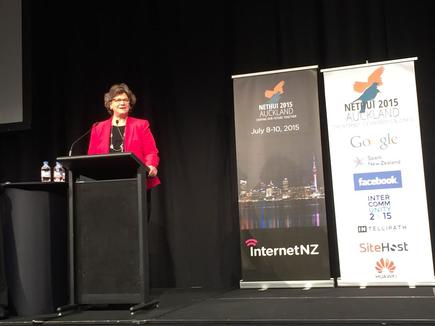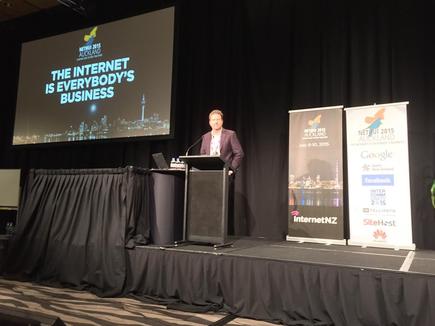
But 75 per cent of that benefit goes to digital businesses alone, she says.
“You have seen the transformative power of the Internet on economies,” says Brown, in her keynote address at this year’s NetHui.
“You don’t see that kind of growth that you want if you don’t have access.”
The digital divide
The 2015 Global Internet Report highlights how the evolution of the mobile Internet will further impact the flow of benefits from this connectivity.
In the mobile space, there is a huge gap between those who have a lot of connectivity and those who have none, she notes.
The report, released by the Internet Society this week, finds while 94 per cent of the global population is covered by a mobile network, only 48 per cent of the population have 3G coverage. Just over a quarter have subscribed to a mobile Internet service, leaving room to increase adoption by focusing on affordability and relevance.
Think about the difference in behaviour from eight years ago when you were accessing the Internet at home or the office, she says.
With the rise of mobile Internet, “you are everywhere, you can access the information anywhere you go".
Read more: 10 things CIOs need to know about agile development

The collective challenge is to help bridge the digital divide, according to the report.
“As these users come online, and all users continue to increase their usage, the necessary spectrum must be made available, under policies that encourage efficient spectrum use, competition, and innovation,” states the report.
Internet connectivity is never done
Communications Minister Amy Adams also highlights the imperative of connectivity for New Zealand’s growth.
The pipes in the ground or wires overhead are not going to be what delivers us transformative change, says Adams.
Read more: Online map helps Kiwis find best broadband options for home and business

“Equally the reality is that the sort of transformative change that we’re coming to expect and demand isn’t possible without good connectivity infrastructure.”
She links this to the progress of the Ultra-Fast Broadband (UFB) program which has now reached midway.
The nine-year UFB build started in 2010 and is now complete in 11 towns across the North and South Island but are actually all in provincial New Zealand.
The build is now 50 per complete, she says. “We’ve just connected our 100,000th user, 350 premises everyday are getting connected so the program is tracking very well. It’s ahead of schedule and under budget.”
Read more: Lessons on building ‘digital empires'
“For me, UFB connectivity is the single biggest thing we can do for regional development,” she says.
It provides the ability to connect any part of New Zealand to any part of the world instantly without the disadvantage of distance, she says. “It really is game changing.”
“The challenge ahead is while we have made great progress in a short amount of time, the demand and expectation for always available, high speed internet is accelerating even faster.”
“There is always the sense Internet is slow and is not good but we are forgetting it is so much better than it was.
“Internet connectivity is never done,” she says. “It is effectively like running water or electricity.”
“In the same way that it would be unimaginable for us to think of a house that didn’t have either running water or electricity, fixed and cellular connectivity has become the same.”
Read more: How CIOs can shift to a 'digital first' ERP mindset
Welcoming the #internet whanau @NetHuiNZ #cio #haka pic.twitter.com/8on3yCG8fH
— Divina Paredes (@divinap) July 8, 2015
Send news tips and comments to divina_paredes@idg.co.nz
Follow Divina Paredes on Twitter: @divinap
Follow CIO New Zealand on Twitter:@cio_nz
Sign up for CIO newsletters for regular updates on CIO news, views and events.
Join the CIO New Zealand group on LinkedIn. The group is open to CIOs, IT Directors, COOs, CTOs and senior IT managers.
